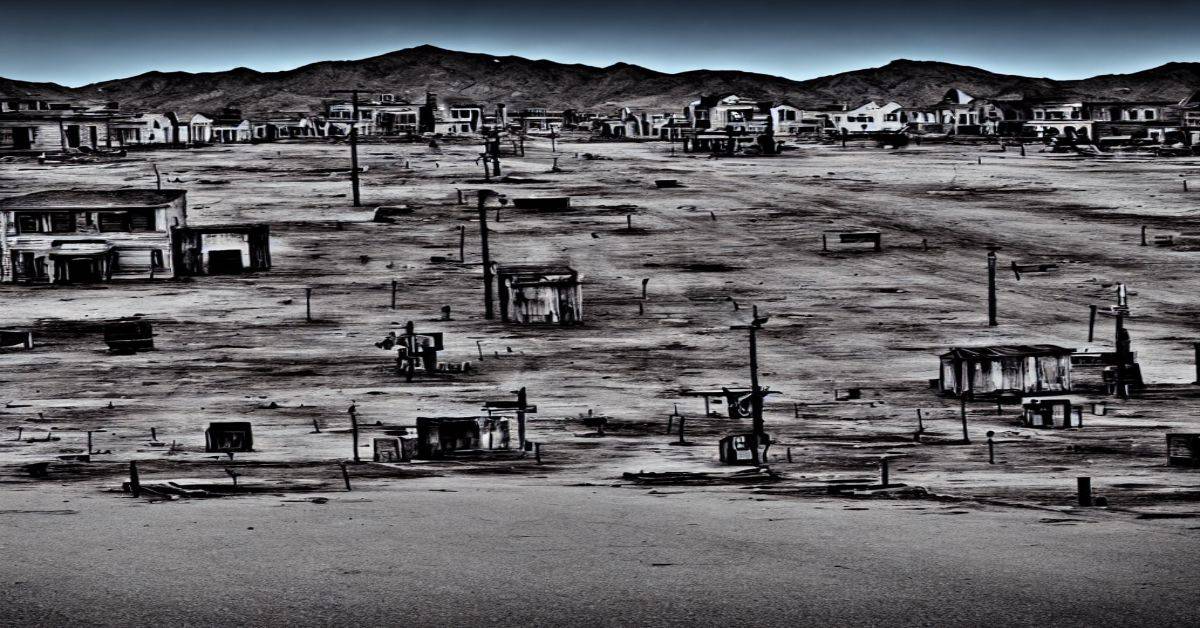Crabtown, Iowa, once a bustling settlement located in the eastern region of the Maquoketa River bridge, has now become a ghost town shrouded in mysterious secrets.
The town’s history dates back to the mid-1800s when the Crab family founded it, and it steadily grew in population until the turn of the century.
However, only the bridge remains today, and Crabtown has become a place of eerie silence and haunting stories. Despite its ghostly atmosphere, Crabtown still holds artifacts and remnants of its past waiting to be discovered.
In this article, we will delve into the history of Crabtown and explore the enigmatic secrets within this once-thriving settlement.
By examining the location and settlement, the history and name, and the remains and artifacts of Crabtown, we hope to uncover the mysteries that make it a haunting ghost town.
Key Takeaways
- Crabtown was a settlement founded by the Crab family in the mid-1800s, located in the eastern region of the Maquoketa River bridge.
- The town’s population grew slowly, but by the early 1900s, it had become a ghost town.
- The Crabs were known for their hard-working nature and entrepreneurial spirit, and they played a significant role in the development of the surrounding region.
- Only the bridge remains today, and Crabtown has become a place of eerie silence and haunting stories. Techniques such as metal detecting can help uncover remnants of the past, and preservation efforts can ensure that these artifacts are not lost to time.
Location and Settlement
Located east of the Maquoketa River bridge, Crabtown was a small settlement that existed from the mid-1800s to turn of the century. It was situated in an area with several geographical features, including a nearby river and forests. The town grew slowly, with most residents engaged in farming and other agricultural activities.
However, by the early 1900s, the population began to decline, and the town eventually became a ghost town. Today, only the bridge remains as a remnant of Crabtown’s past. The bridge, which spans the Maquoketa River, is a testament to the town’s former existence.
Despite the town’s disappearance, the bridge continues to be used by locals and visitors, and it is a popular spot for fishing and other recreational activities.
History and Name
The settlement that once existed in the area now known as Crabtown was home to a modest population from the mid-1800s to the turn of the century. Historical records suggest that the community was named after the prominent Crab family, among the area’s earliest settlers. The Crabs were known for their hard-working nature and entrepreneurial spirit, and they played a significant role in the development of the surrounding region.
Origins and Genealogy
- The Crab family can trace their roots back to England, where they were a well-established family of farmers.
- The first member of the family to arrive in the United States was John Crab, who immigrated to Virginia in the early 1700s.
- Over the next century, the family gradually migrated westward, eventually settling in the area that is now known as Crabtown.
Famous Crabtown Residents
- While Crabtown was a small community, it was home to several notable individuals.
- One of the most famous residents of Crabtown was John Crab, who served as the town’s first postmaster and was instrumental in establishing the local school system.
- Another well-known figure was Mary Crab, a pioneering businesswoman who ran a successful general store in Crabtown for many years.
Remains and Artifacts
One can still find remnants of the past in the area east of the Maquoketa River bridge, where a small settlement once stood and where artifacts from the mid-1800s to the turn of the century can be discovered with the help of a metal detector.
The only remaining structure in Crabtown is the bridge, a stark reminder of what was once a thriving community.
Exploring techniques such as metal detecting are popular among history enthusiasts interested in uncovering past traces. However, it is important to note that preserving these artifacts is crucial to maintaining the integrity of history.
Preservation efforts, such as proper storage and cataloging, can ensure that these artifacts are not lost to time and that they can continue to shed light on the lives of those who once called Crabtown home.
Frequently Asked Questions
What caused the decline of Crabtown’s population and eventual abandonment?
The decline of Crabtown’s population and eventual abandonment may have been caused by environmental factors such as soil depletion and erosion, as well as economic changes such as the decline of the lumber industry and the shift towards larger cities.
Are there any local legends or stories surrounding Crabtown and its residents?
Local lore surrounding Crabtown includes tales of supernatural experiences, such as ghostly sightings and eerie sounds. However, there is little concrete evidence to support these claims, and they remain largely the product of local legend and imagination.
Have any paranormal investigations or sightings been reported in Crabtown?
No paranormal investigations or ghost sightings have been reported in Crabtown.
Is there any potential for restoration or preservation efforts in Crabtown?
Potential restoration or preservation efforts in Crabtown may require a thorough assessment of the remaining structures and artifacts and identifying funding sources and community support. Possible solutions may include historical designation, grants, and local organizations or universities partnerships.
What types of artifacts have been found in Crabtown and what do they reveal about the settlement’s history?
Excavated artifacts from Crabtown reveal insight into the settlement’s lifestyle. Metal detectors have uncovered personal items like buttons, tools, and coins. These findings suggest a modest, self-sufficient community with little access to luxury goods.
